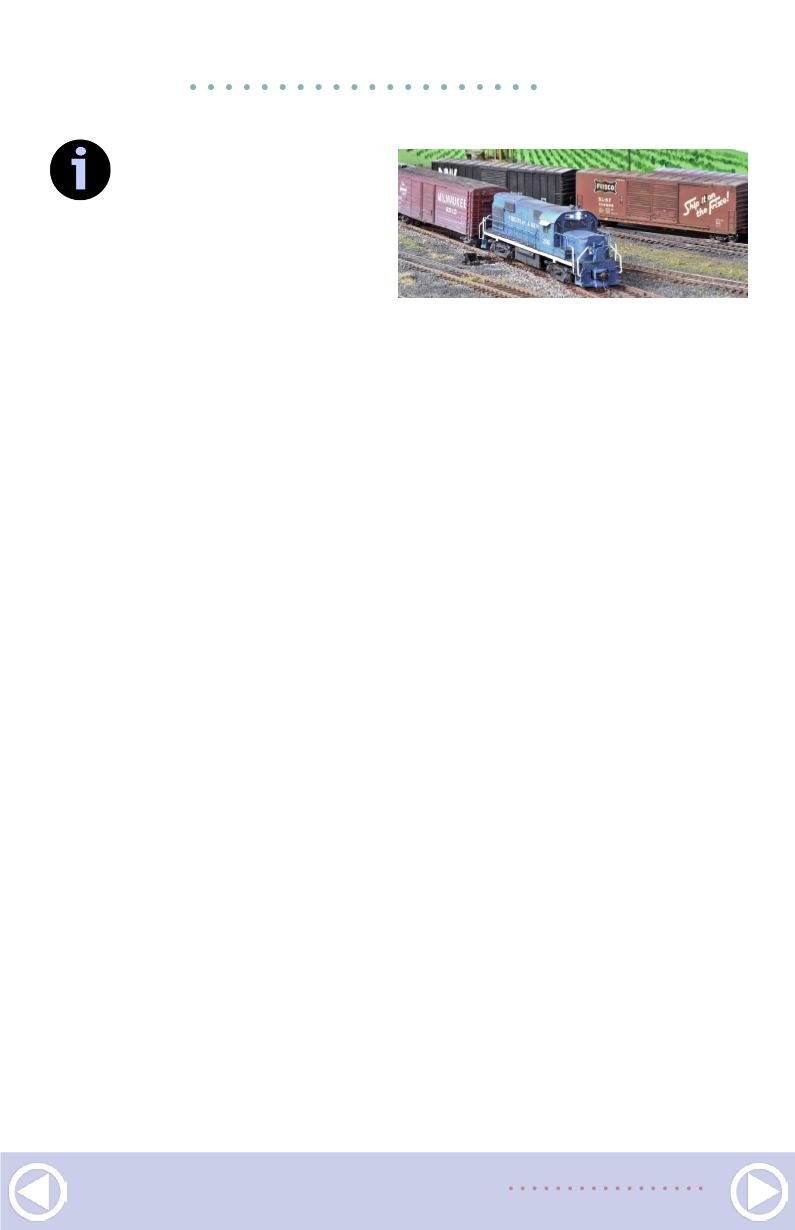
. . . . . . . . . . . . . . . . . . . . . . . . . . . . . . . . . . . . . . . . . . . .
FREIGHT CARS
FREIGHT CARS HAVE
always been a special inter-
est of mine. One the limit-
ing factors of my previous layout, which was a free-lanced
coal hauling railroad, was the lack of plausible options for
employing a wide variety of freight cars. It seemed like the
whole railroad was filled with hopper cars. I have always had
an eye for the evolution of railroad paint schemes and, about
the time of my second layout, I was beginning to notice the
variations in specific car types among the freight car build-
ers. I also began paying more attention to the varying details
and types of construction.
As my interest in freight cars increased, I began cutting out freight
car articles that appeared in the hobby magazines. These were
added to the large number of slides and prints of freight cars that I
have collected over the years. Then along came Morning Sun Books
with their series of color guides and I was in heaven.
Modeling rail-served industries has been a love of mine for a
long time, too. I have studied and accumulated data on many
industries over the years. My current layout has provided a lot of
opportunities to model a broad spectrum of trackside industries.
I have loosely based my selections on industries that were located
in and around the Greater Cincinnati area from the 1940s up
through the 1970s. Matching up the industries with my large and
varied freight car fleet has provided the basis for my car cards
and waybill routings.
– John Miller
. . . . . . . . . . . . . . . . . . . . . . . . . . . . . . . . . . . . . . . . . . . .
KANAWHA & LAKE ERIE |
15


